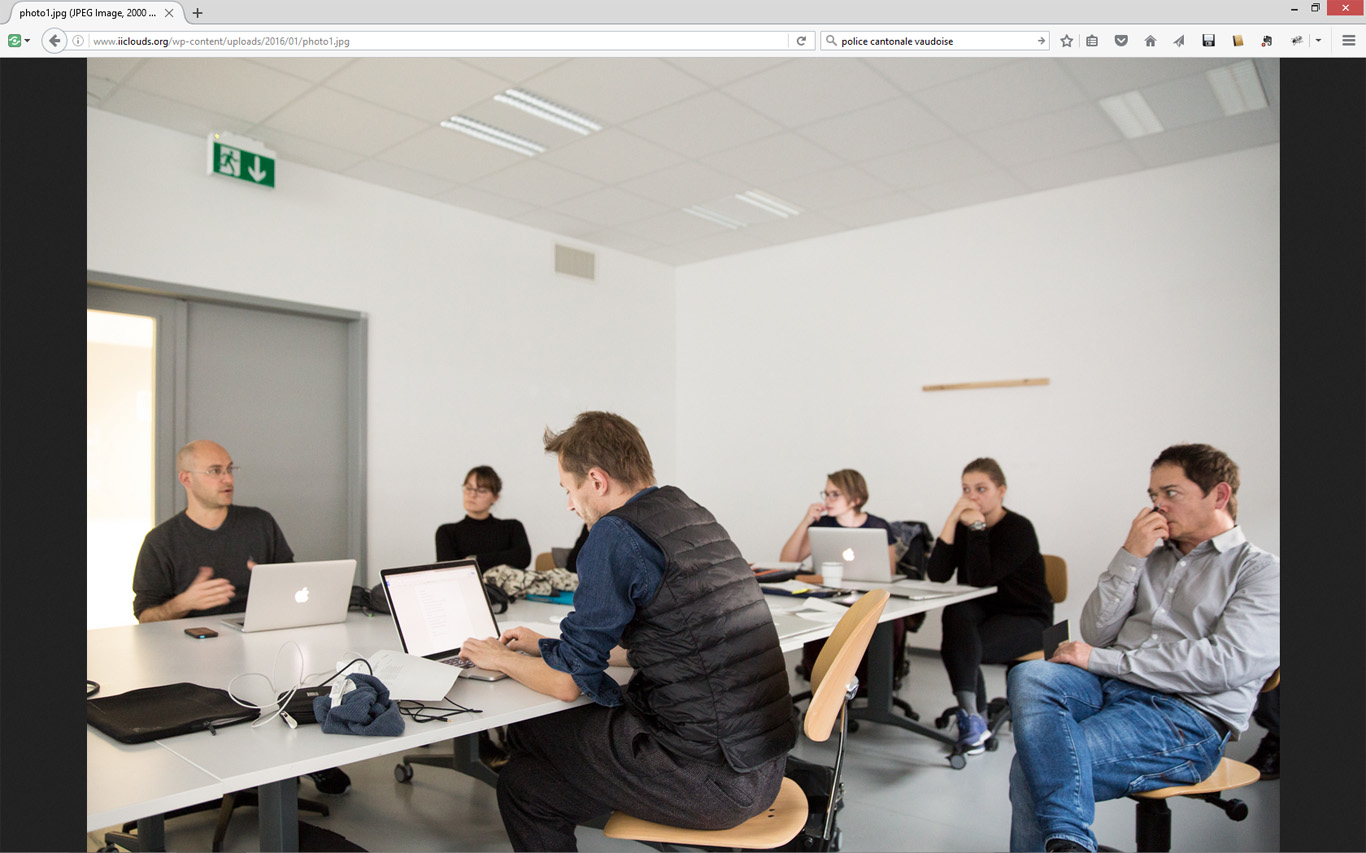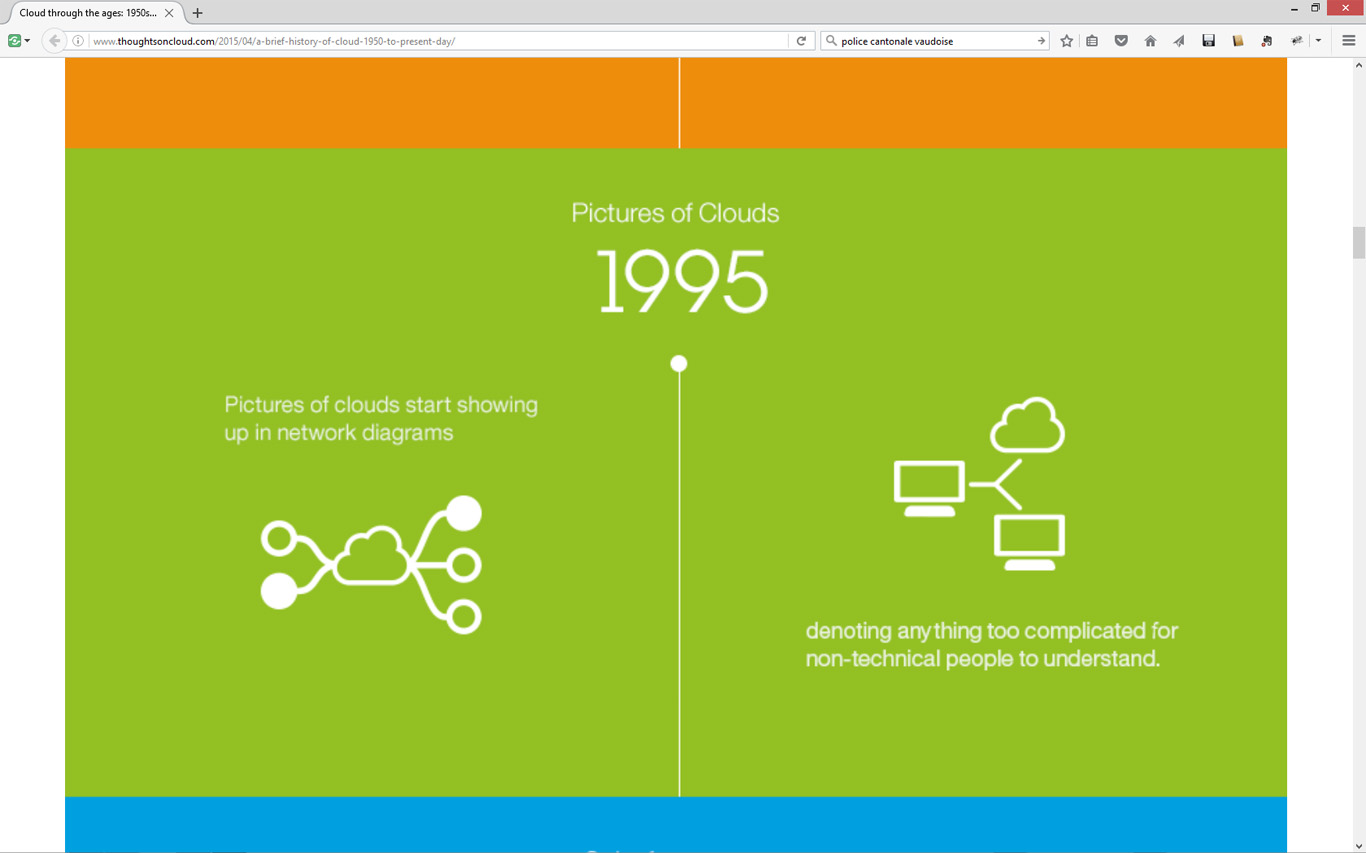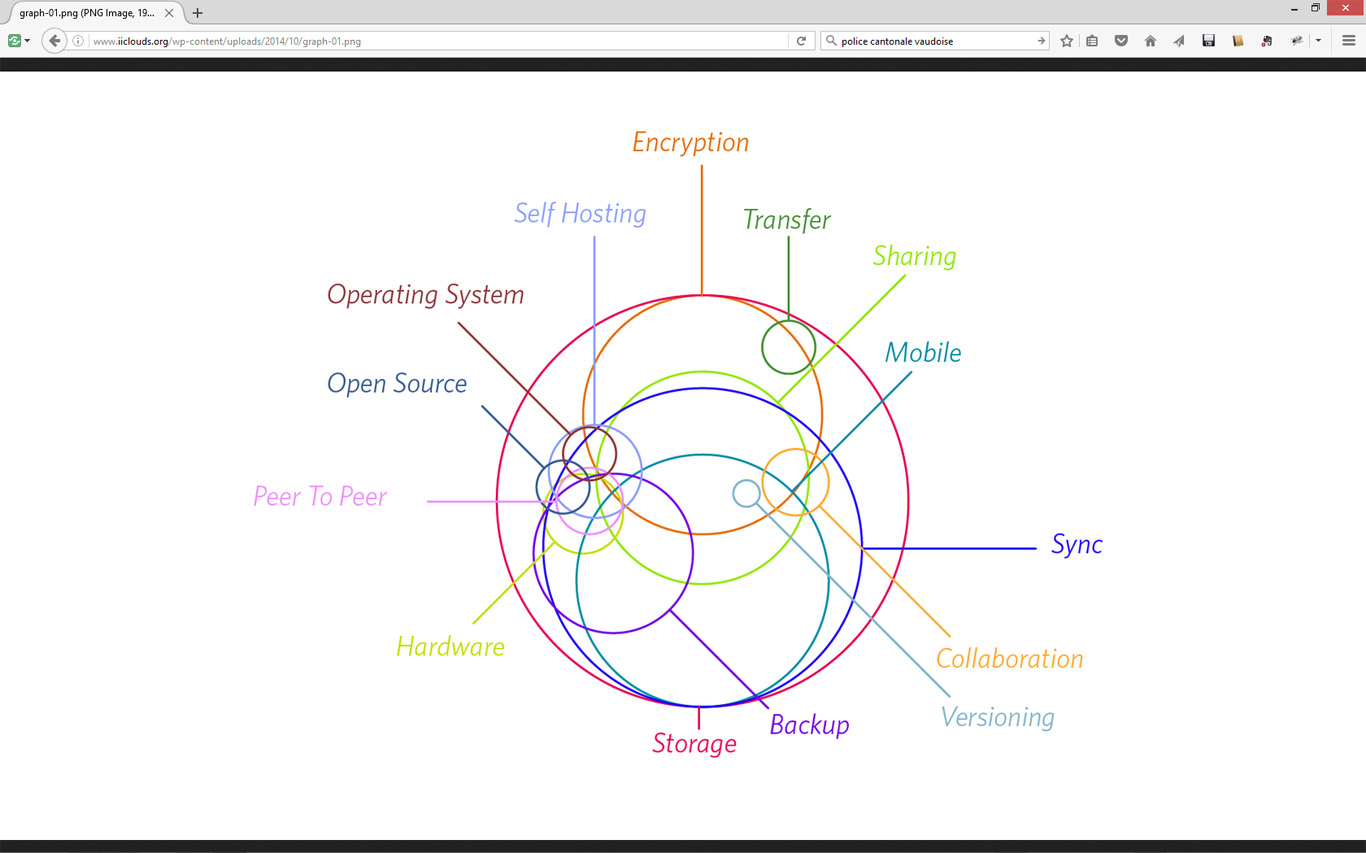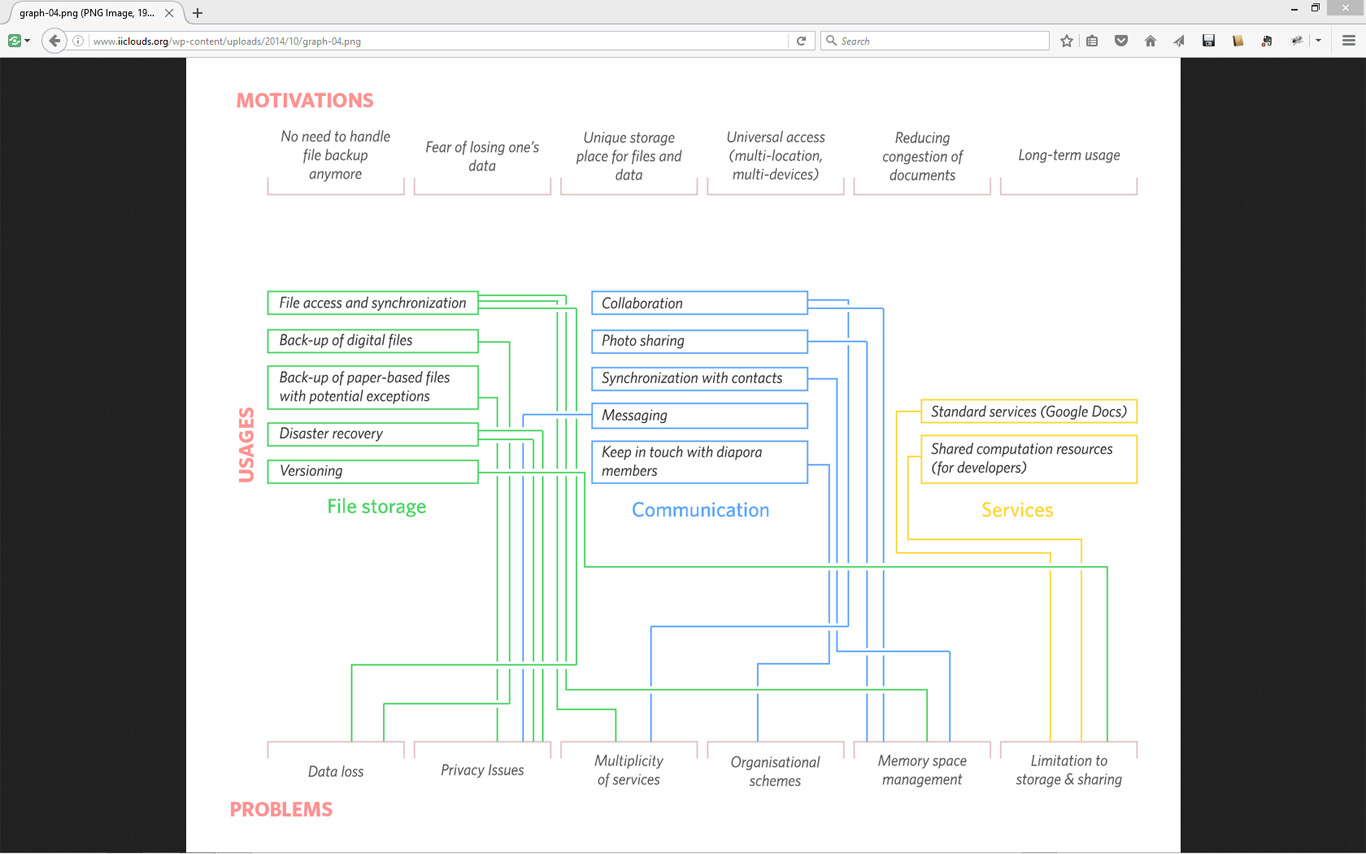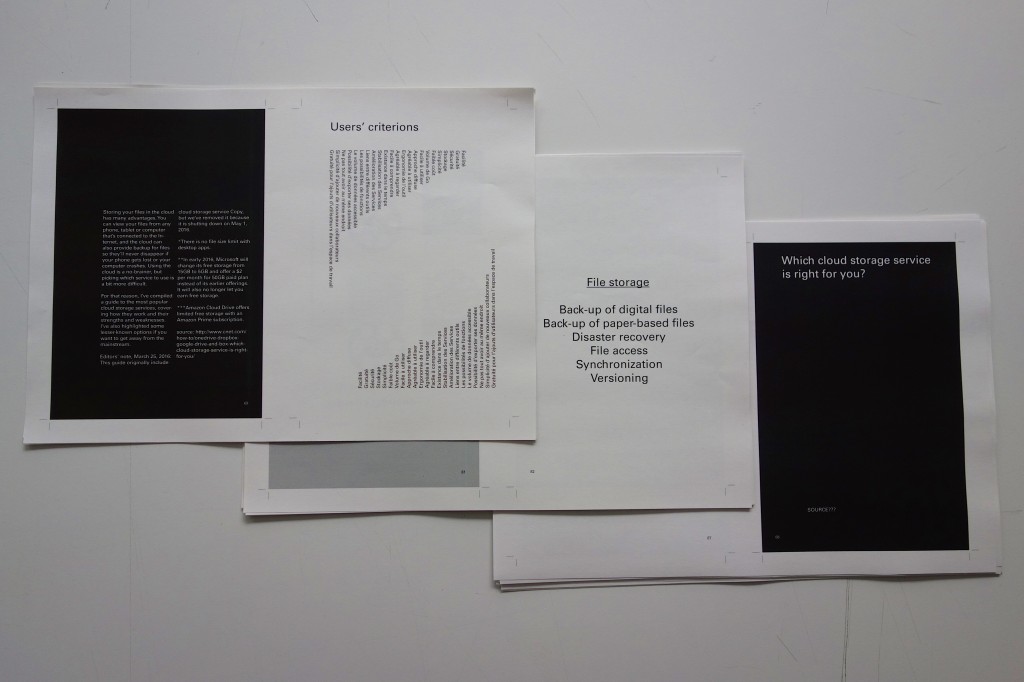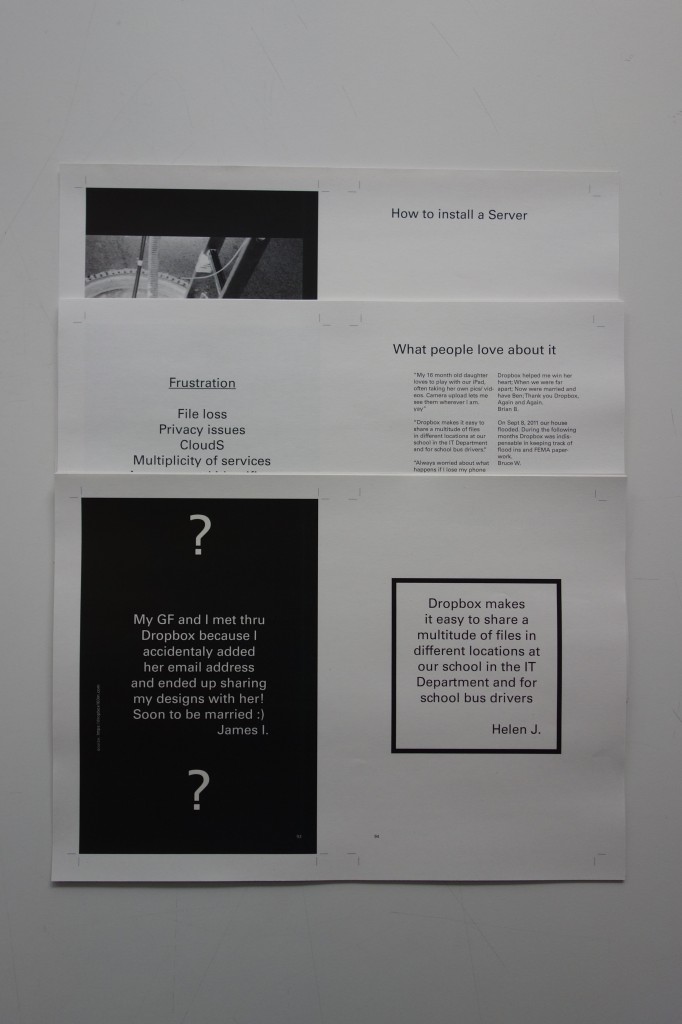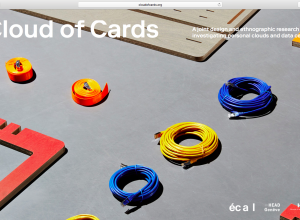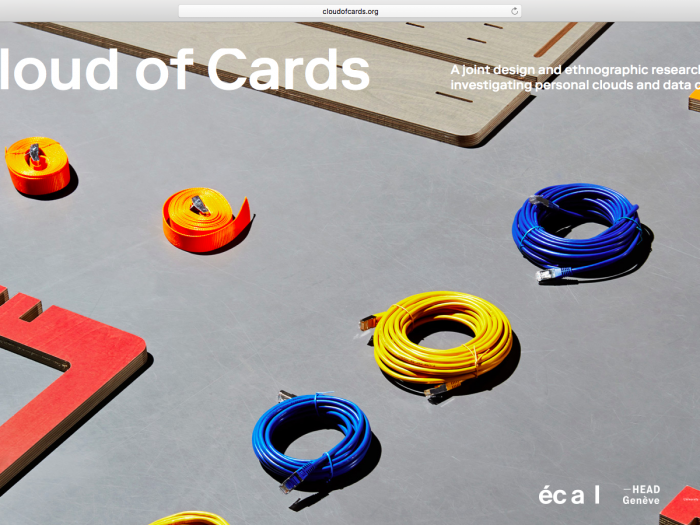It is time to wrap things up with the field research we conducted with a series of workshops.
Practically, the material we produced in the first year of the project is based on two main sources. On the one hand, we spent a year and a half collecting messages, discussions, exchanges and arguments online – mostly on forums/on-line platforms related to cloud computing. On the other hand, using this interview guide, we conducted a series of discussions with various profiles of nomadic workers (musicians, VJs, journalists, consultants, third space/fab lab users) to understand how they used cloud computing systems.
Sasha Pohflepp with Nicolas Nova, Patrick Keller and media design students at the end of his workshop at HEAD – Genève.
Image pulled from the post “I&IC workshop #6 with Sasha Pohflepp at HEAD” (15.01.2016)
This material was complemented by a workshop with Media Design students, under the supervision of Sascha Pohflepp, focused on the gestures people adopt with such platforms.
The analysis of this material enabled us to highlight a set of lessons to feed the design of alternative perspectives related to platforms and objects to support the “personal cloud”. These design alternatives are further developed in Patrick Keller’s post about the design research wrap-up.
Lesson 1: “Cloud!?”
If the term “Cloud” is commonly used by our informants, we noticed that it was a surprisingly unclear notion for most of them. As a category, “cloud computing” was hard to grasp and they provided us with several definition of what it actually refers to. Although it is a fundamental infrastructure for everyday life with digital technologies, it seems that it is not as meaningful as we expected. From the users’ perspective, the cloud is thus an intriguing research category.
1995, more “Pictures of Clouds” start to appear “denoting anything too complicated for non-technical people to understand.” Image from “A Brief History of Cloud” on Thoughts On Cloud.
Website linked from the post “Pictures of Clouds, 1995” (21.10.2015).
Lesson 2: cloud providers, cloud users
As usual with technology, there are two kinds of discourses: the promises from those who provide the services, and their actual appropriation by the users, which often lead to a mix pleasant surprises, frustrations, interrogations and satisfaction. However, there is a gap between these two.
For the majority of people we interviewed, the cloud corresponds to a tiny icon on the OS GUI (Dropbox or Google Drive). Unlike the service providers’ discourse and representation (data centers, evanescent clouds of data), the cloud corresponds to a set of (small) user interfaces features, seamlessly integrated into the OS. This means that it is hard for them to separate the cloud and their operating system. As our informants reported, they “feel” the cloud when “it refreshes” or when it doesn’t work (or when there’s no network access).
In addition, our first workshop showed that what people report as “cloud computing” is quite diverse. As represented on the following diagram, it encompasses quite a large set of services:
Diagram of motivations, usages and problems in cloud applications by Nicolas Nova and Charles Chalas.
Retrieved from the post “I&IC workshop #1 at HEAD” (06.10.2014).
Our interviews, mixed with the analysis of forum content, also enabled us to map the this variety of uses to different motivations, highlighted in the following diagram :
Diagram of motivations, usages and problems in cloud applications by Nicolas Nova and Charles Chalas.
Retrieved from the post “I&IC workshop #1 at HEAD” (06.10.2014).
Lesson 3: is the cloud a set of folders?
The gap between the grandiose description of The Cloud by the service providers and what the users actually as a consequence : for the users we spent time with, it corresponds to a set of folders… which actually behave differently than what they are used to. In other words, the representation of distant files/folders is perceived a misleading. The way file storage is represented gives them the impression that they would work as the local folders. But it is not the case and it leads to surprises and frustrations: disappearance of documents when someone accidentally removes a file he though was “only on his laptop”, confusion between “shared folder” and “invitation in a folder”, etc.
Lesson 4: an opaque process
A possible reason for this confusion is the difficulty to understand a process that is quite opaque for the users. Because, overall, cloud computing is all about “syncing” as we noticed, except that the syncing behavior of the services is difficult to understand: even when Dropbox tell users when it starts/when it’s finished, there are always exceptions. Plus cloud computing relies on constant connectivity… which is not always the case.
Image pulled from the post “I&IC Workshop #6 with Sascha Pohflepp at HEAD: output > Cloud Gestures“.
Lesson 5: surveillance? mmhmm …
This one was the biggest surprise for us. Although most of our informants were aware of the surveillance risks, robocopyright (automatic verification of IP-protected content), and how personal data can be used for unknown purposes… no one was ready to stop using Cloud platforms. They are concerned by these issues of course but they saw them as drawbacks, the ugly side of the facility of use/access.
What’s next?
We are currently in the process of designing a booklet that expand on these 5 lessons with the material we produced in the field research workshop. In order to do this, we chose the format of the “almanac“, which we found quite apropos for this type of content. The book will feature the results of our work in a fragmentary way with a certain diversity of elements : diagrams, quotes, definitions of terms used by service provides and users, photographs, drawings, etc.
Mock-up of the booklet summing up the material produced in our field research.
